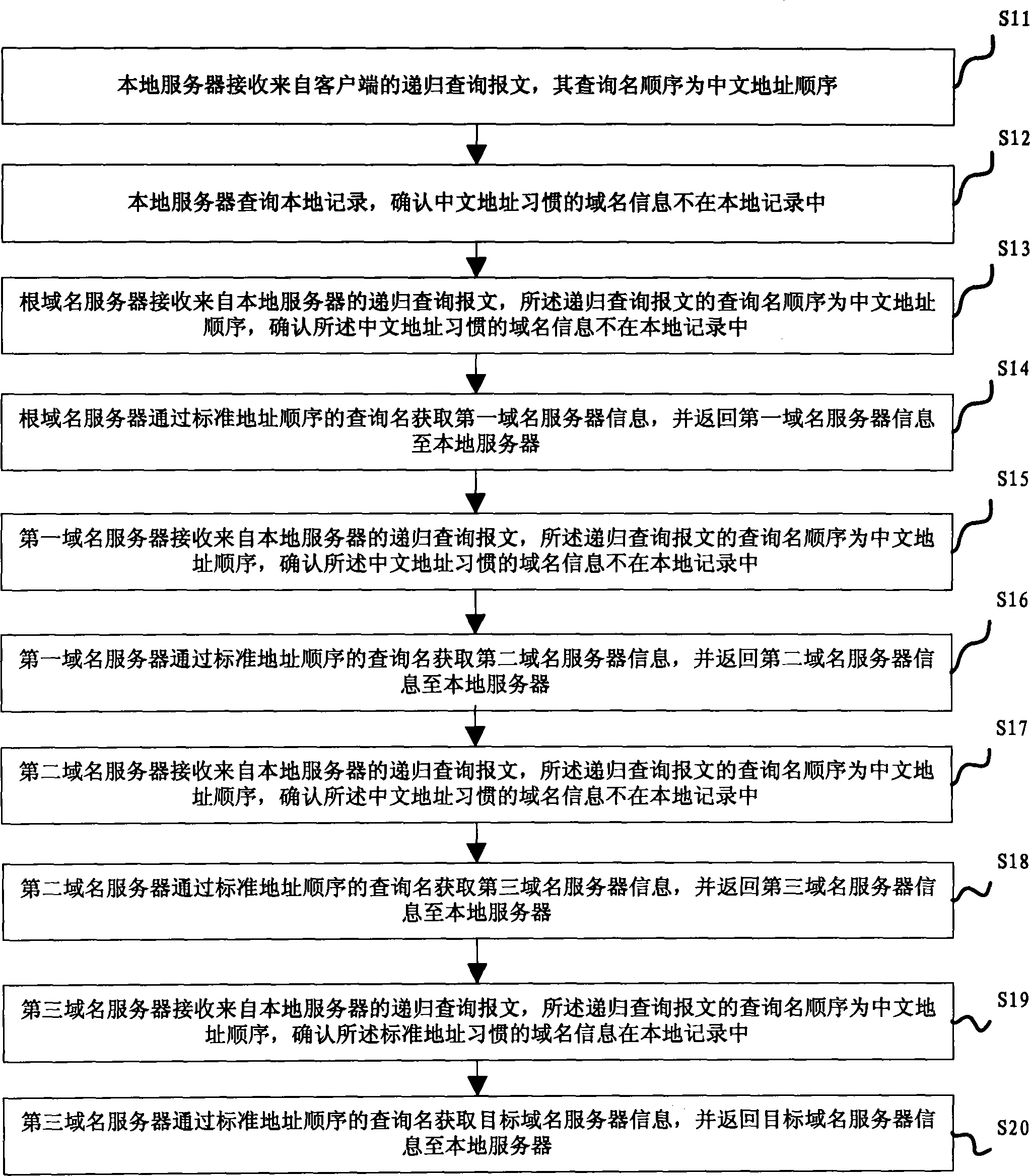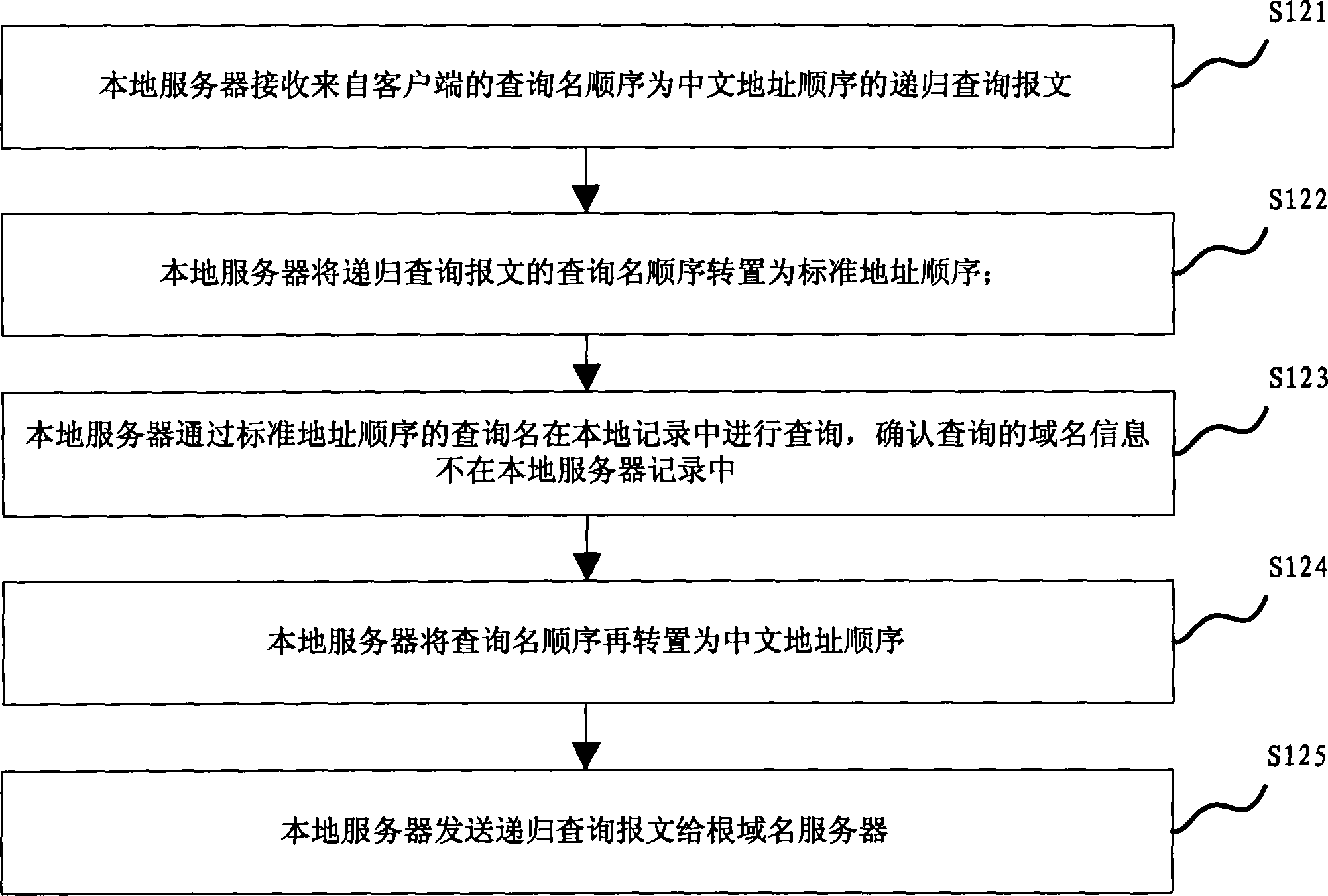Chinese habit address resolution method
A Chinese address and address resolution technology, which is applied in special data processing applications, instruments, electrical digital data processing, etc., can solve problems such as the arrangement method does not conform to the Chinese address arrangement habits, the degradation of user experience, and the inability to correctly express names and words, etc. Achieve the effects of accelerated promotion and use, effective analysis, and easy memory
- Summary
- Abstract
- Description
- Claims
- Application Information
AI Technical Summary
Problems solved by technology
Method used
Image
Examples
Embodiment Construction
[0022] Such as figure 1 As shown, this embodiment proposes a method for resolving customary Chinese addresses, which uses a recursive query method to resolve customary Chinese addresses, specifically including the following steps:
[0023] S11. The local server receives the recursive query message from the client, and the sequence of query names is the sequence of Chinese addresses.
[0024] Specifically, such as figure 2 shown, including the following steps:
[0025] S111, the domain name resolution module adopts the punycode encoding method to map the Chinese customary address filled in the address bar into the Chinese customary address DNS character set;
[0026] S112. The domain name resolution module sends a recursive query message to the local server, and the query name of the recursive query message is the Chinese customary address DNS character set.
[0027] Take "China.Education.Ministry of Education.Website" as an example, specifically:
[0028] In the address b...
PUM
 Login to View More
Login to View More Abstract
Description
Claims
Application Information
 Login to View More
Login to View More - R&D
- Intellectual Property
- Life Sciences
- Materials
- Tech Scout
- Unparalleled Data Quality
- Higher Quality Content
- 60% Fewer Hallucinations
Browse by: Latest US Patents, China's latest patents, Technical Efficacy Thesaurus, Application Domain, Technology Topic, Popular Technical Reports.
© 2025 PatSnap. All rights reserved.Legal|Privacy policy|Modern Slavery Act Transparency Statement|Sitemap|About US| Contact US: help@patsnap.com



